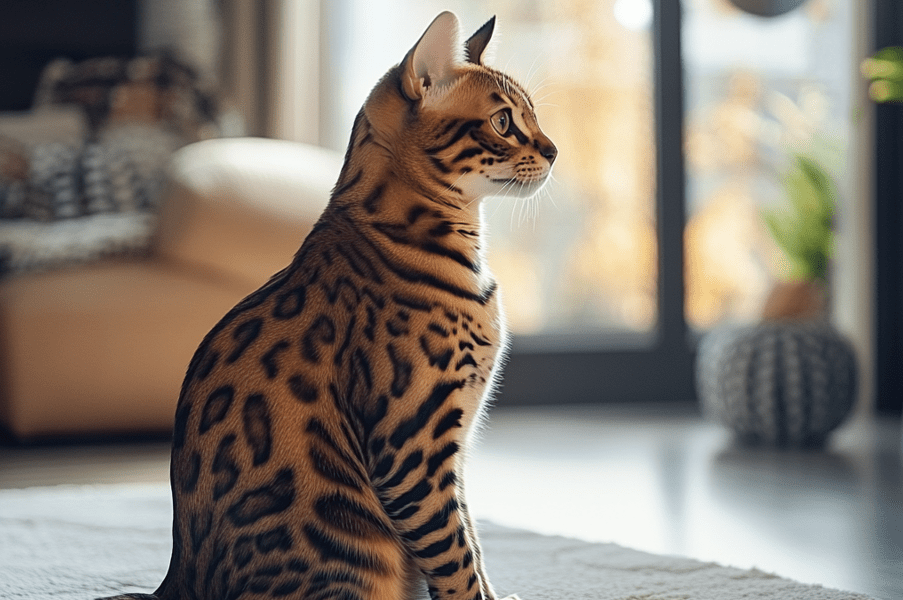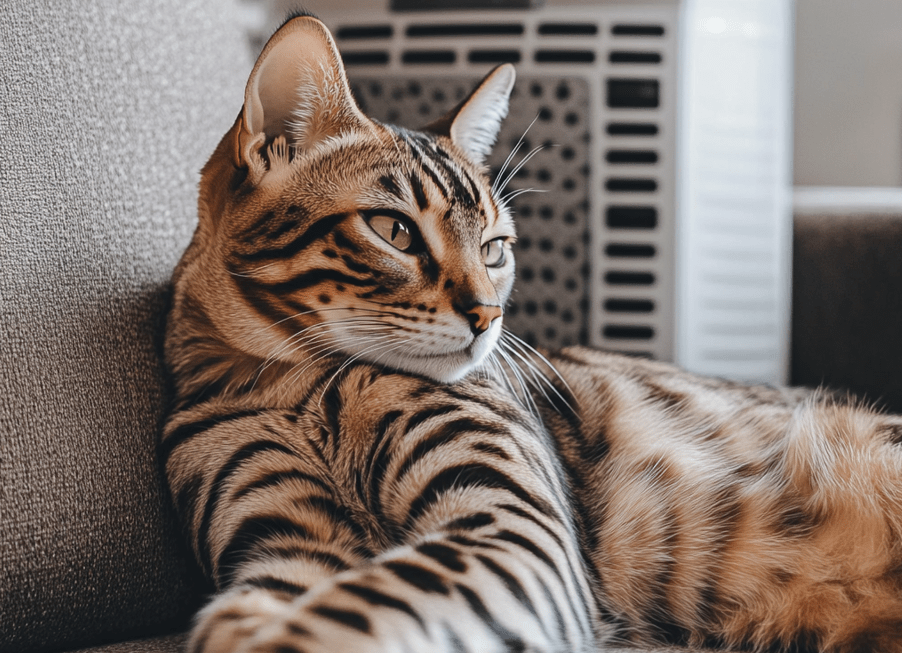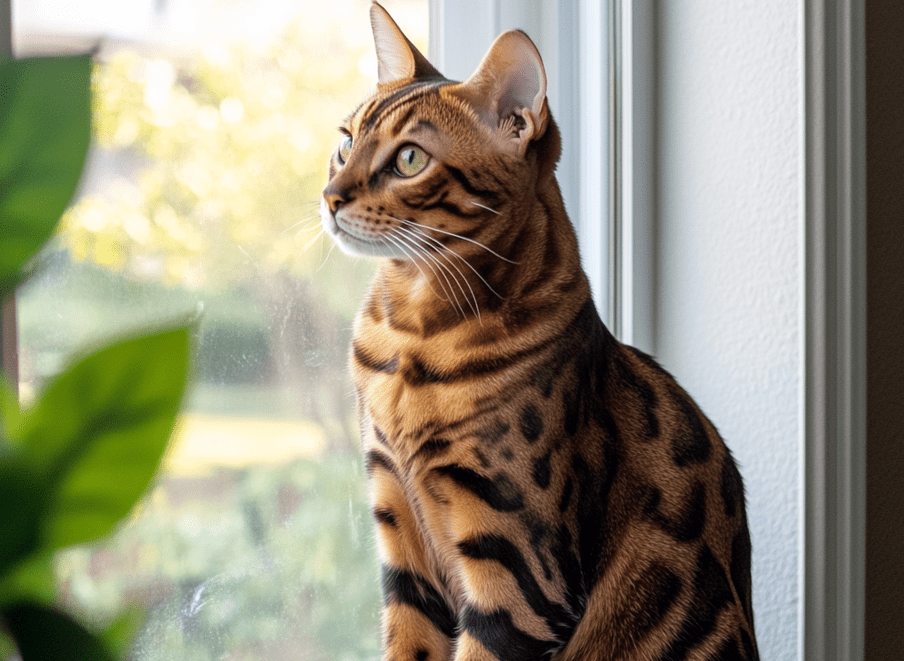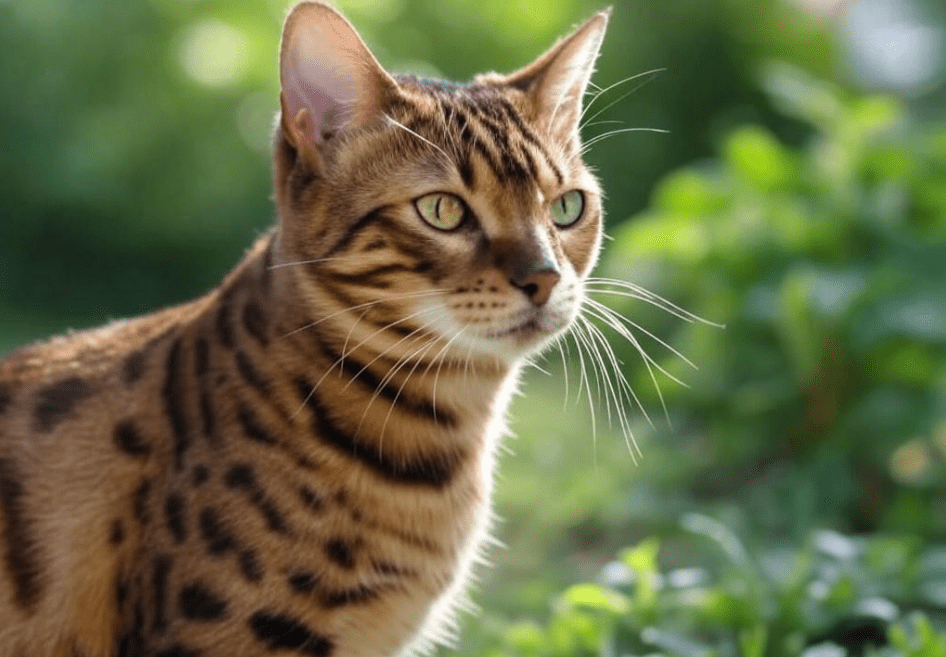
Bengal cats, with their stunning leopard-like coats and playful personalities, are a beloved breed among cat enthusiasts. However, potential and current owners often wonder: Are Bengal cats prone to allergies? This question is critical for ensuring the health and happiness of these unique felines. In this comprehensive guide, we’ll explore whether Bengal cats are susceptible to allergies, the types of allergies they may face, symptoms to watch for, and actionable steps for prevention and management. Our goal is to equip Bengal cat owners with the knowledge needed to keep their pets thriving.
Understanding Bengal Cats and Their Unique Traits
Bengal cats are a hybrid breed, resulting from crossing domestic cats with the Asian leopard cat. Known for their striking appearance and energetic demeanor, Bengals are often described as intelligent, curious, and affectionate. Their short, dense coats are low-shedding compared to other breeds, which may lead some to believe they’re less likely to trigger allergies in humans. However, when it comes to the cats themselves, Bengal cats can still develop allergies, just like any other feline.
Allergies in cats, including Bengals, occur when their immune system overreacts to a substance (allergen) that is typically harmless. These allergens can range from environmental factors to food ingredients. Understanding the specific needs of Bengal cats is essential, as their active nature and sensitive systems may make them more reactive to certain triggers.
Are Bengal Cats More Prone to Allergies?
There’s no definitive evidence that Bengal cats are inherently more prone to allergies than other breeds. However, their unique genetic makeup and sensitive skin may make them more susceptible to certain types of allergies, particularly skin-related ones. Bengals have a reputation for being sensitive to environmental changes, poor-quality diets, or grooming products, which can manifest as allergic reactions.
Veterinarians note that Bengals’ short coats and active lifestyles mean they’re often exposed to potential allergens, such as pollen or dust, during playtime. Additionally, their curious nature may lead them to encounter irritants more frequently. While not inherently “allergy-prone,” Bengal cats require attentive care to minimize allergic reactions.
Types of Allergies Bengal Cats May Experience
Bengal cats can develop three main types of allergies: environmental, food, and flea-related. Below, we’ll dive into each type, their causes, and how they affect Bengals.
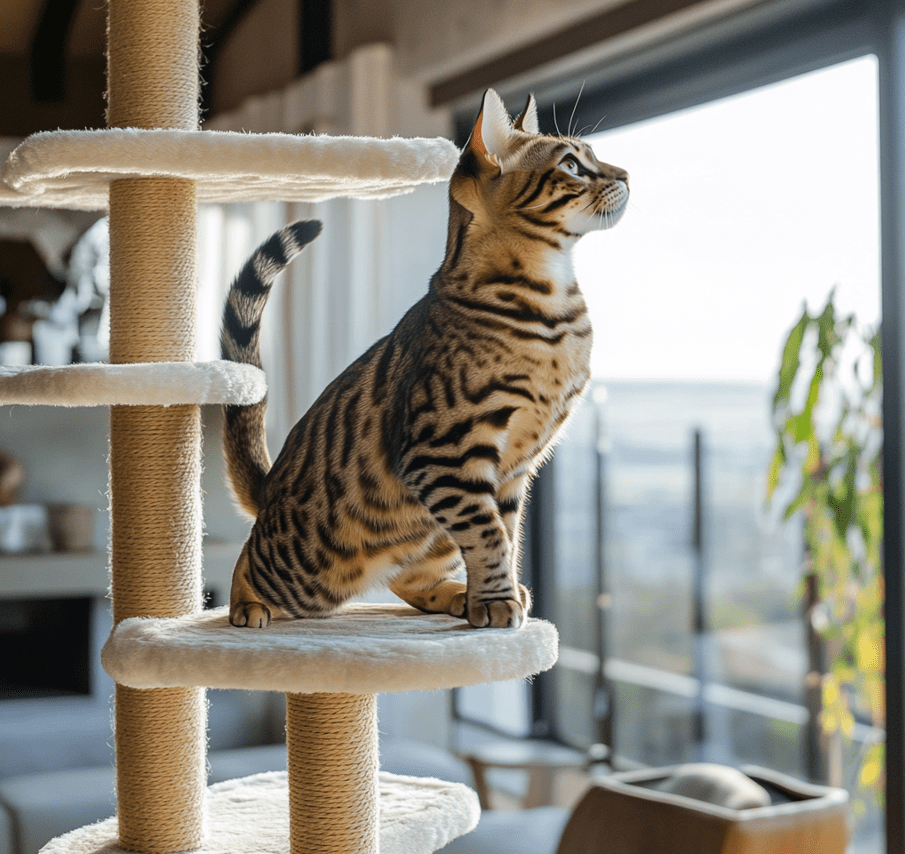
1. Environmental Allergies (Atopic Dermatitis)
Environmental allergies, also known as atopic dermatitis, occur when a Bengal cat’s immune system reacts to substances in their surroundings. Common allergens include:
Pollen: From grass, trees, or weeds.
Dust mites: Found in household dust or bedding.
Mold spores: Present in damp areas.
Chemicals: From cleaning products, perfumes, or grooming supplies.
Bengals may be more susceptible to environmental allergies due to their thin skin and active outdoor exploration. Symptoms include excessive scratching, red or inflamed skin, and hair loss, particularly around the face, paws, or belly.
2. Food Allergies
Food allergies in Bengal cats are triggered by specific ingredients in their diet. Unlike food intolerances, which cause digestive issues, food allergies provoke an immune response, often affecting the skin. Common culprits include:
Proteins: Chicken, beef, or fish.
Grains: Wheat, corn, or soy.
Additives: Artificial flavors or preservatives.
Bengals, with their sensitive digestive systems, may develop food allergies if fed low-quality or inappropriate diets. Symptoms include itchy skin, ear infections, vomiting, or diarrhea.
3. Flea Allergies (Flea Allergy Dermatitis)
Flea allergy dermatitis (FAD) is one of the most common allergies in cats, including Bengals. This condition occurs when a cat is hypersensitive to flea saliva, causing intense itching and skin irritation from even a single bite. Bengals’ short coats make it easier to spot fleas, but their sensitive skin can amplify reactions. Symptoms include:
-
Intense scratching, especially near the base of the tail.
-
Red, scabby skin.
-
Hair loss or hot spots.
Recognizing Allergy Symptoms in Bengal Cats
Identifying allergies early is crucial for preventing discomfort and long-term health issues. Here are the most common signs to watch for in Bengal cats:
Excessive Scratching or Grooming: Bengals may scratch or lick themselves obsessively, leading to bald patches or sores.
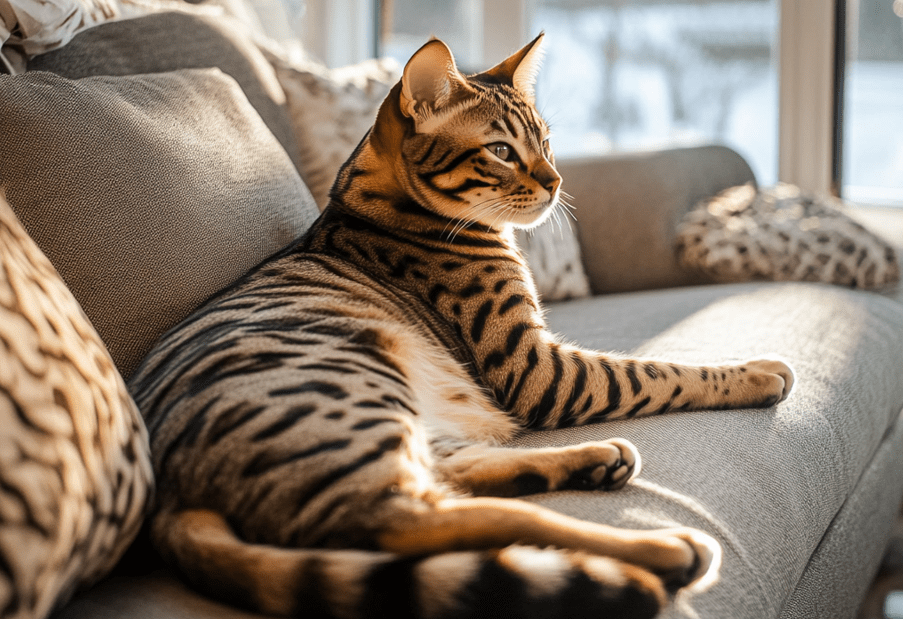
Red or Inflamed Skin: Look for redness, especially on the paws, ears, or belly.
Ear Infections: Recurring ear issues, such as head shaking or waxy buildup, may indicate allergies.
Sneezing or Watery Eyes: These are more common with environmental allergies.
Vomiting or Diarrhea: Often linked to food allergies.
Behavioral Changes: Allergies can cause discomfort, leading to irritability or lethargy.
If you notice any of these symptoms, consult a veterinarian promptly. Early diagnosis can prevent complications like secondary infections.
Diagnosing Allergies in Bengal Cats
Diagnosing allergies in Bengal cats requires a systematic approach. Veterinarians typically follow these steps:
Medical History Review: Your vet will ask about your cat’s diet, environment, and symptoms to identify potential triggers.
Physical Examination: The vet will check for skin lesions, ear infections, or other signs of allergies.
Elimination Diet: For suspected food allergies, your vet may recommend a hypoallergenic diet for 8–12 weeks to pinpoint the offending ingredient.
Allergy Testing: Intradermal skin testing or blood tests can identify environmental allergens, though these are less common for cats than dogs.
Flea Control Check: The vet will ensure fleas are not the cause, as FAD is a common culprit.
Accurate diagnosis is critical, as misidentifying the allergy type can lead to ineffective treatment.
Managing and Treating Allergies in Bengal Cats
Once diagnosed, allergies in Bengal cats can often be managed with a combination of avoidance, medication, and lifestyle changes. Here’s how to address each type:
Managing Environmental Allergies
-
Minimize Allergen Exposure:
-
Use air purifiers to reduce dust and pollen indoors.
-
Wash your Bengal’s bedding weekly in hypoallergenic detergent.
-
Avoid using strong chemicals or scented products near your cat.
-
-
Medications:
-
Antihistamines or corticosteroids may reduce itching and inflammation, but use them under veterinary supervision.
-
Immunotherapy (allergy shots) may be recommended for severe cases.
-
-
Grooming:
-
Regular baths with a vet-approved, hypoallergenic shampoo can remove allergens from your Bengal’s coat.
-
Managing Food Allergies
-
Switch to a Hypoallergenic Diet:
-
Opt for limited-ingredient or novel-protein diets (e.g., duck or venison) to avoid common allergens.
-
Avoid table scraps or treats that may contain triggers.
-
-
Monitor for Improvement:
-
It may take weeks to see results, so be patient and consistent.
-
-
Work with a Vet:
-
A veterinarian or pet nutritionist can recommend high-quality, allergy-friendly foods tailored to your Bengal’s needs.
-
Managing Flea Allergies
-
Flea Prevention:
-
Use vet-recommended flea preventatives year-round, such as topical treatments or oral medications.
-
Treat all pets in the household to prevent reinfestation.
-
-
Environmental Control:
-
Vacuum carpets and furniture regularly to remove flea eggs and larvae.
-
Wash pet bedding frequently.
-
-
Soothing Treatments:
-
Medicated shampoos or sprays can relieve itching and prevent secondary infections.
-
Preventing Allergies in Bengal Cats
While not all allergies can be prevented, proactive care can reduce the risk and severity. Here are practical tips for Bengal cat owners:
Feed a High-Quality Diet: Choose premium cat food with natural ingredients and avoid fillers like corn or soy. Bengals thrive on high-protein diets that mimic their wild ancestors’ needs.
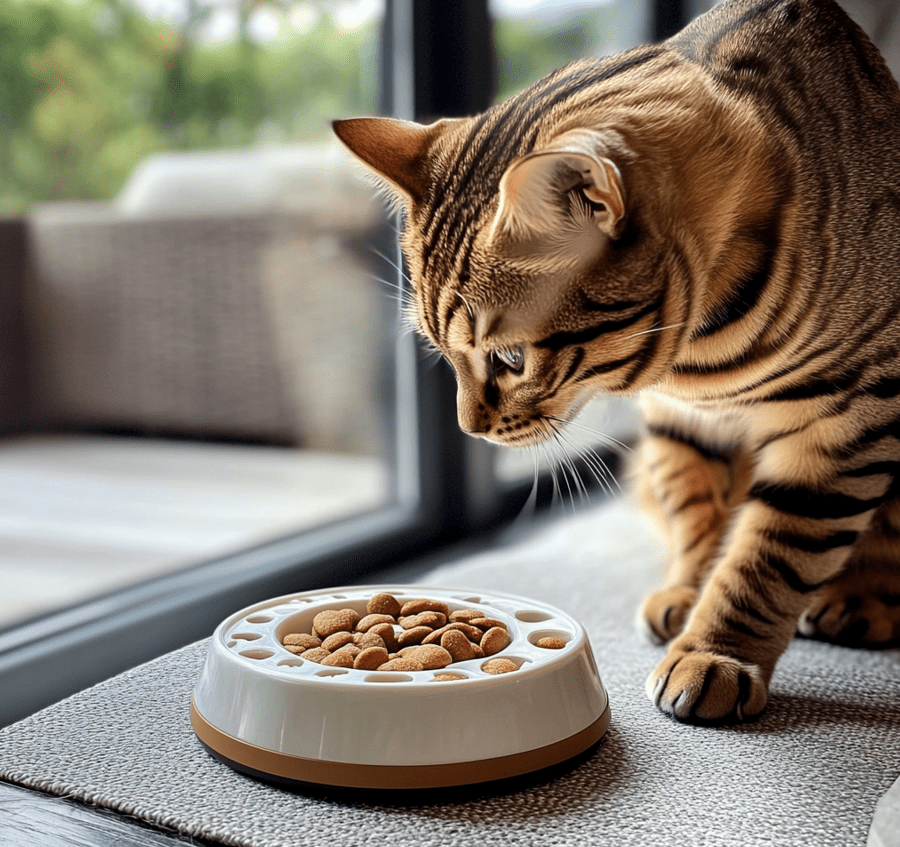
Maintain a Clean Environment: Regularly clean your home to reduce dust, mold, and other allergens. Use pet-safe cleaning products.
Groom Regularly: Brush your Bengal’s coat to remove debris and bathe them as needed with gentle, hypoallergenic shampoos.
Stay on Top of Flea Control: Consistent flea prevention is non-negotiable, especially for Bengals with sensitive skin.
Monitor Health Changes: Keep a log of any symptoms or behavioral changes to catch potential allergies early.
Regular Vet Checkups: Annual or biannual vet visits can help detect and address health issues before they escalate.
Can Bengal Cats Trigger Allergies in Humans?
While this article focuses on allergies in Bengal cats, it’s worth addressing a common question: Are Bengal cats hypoallergenic? No cat breed is truly hypoallergenic, but Bengals produce less of the Fel d 1 protein (the primary allergen in cat dander) than some breeds. Their short, low-shedding coats also reduce dander spread. However, allergy sufferers should spend time with a Bengal before adopting to gauge their reaction.
When to Seek Veterinary Help
If your Bengal cat shows persistent allergy symptoms, don’t delay seeking professional help. Untreated allergies can lead to:
-
Chronic skin infections.
-
Painful hot spots.
-
Behavioral issues due to discomfort.
A veterinarian can provide a tailored treatment plan, including prescription medications or specialized diets, to improve your cat’s quality of life.
Living with a Bengal Cat: Tips for Allergy Management
Owning a Bengal cat is a rewarding experience, but their high-energy nature and potential for allergies require proactive care. Here are additional tips to ensure your Bengal stays healthy:
Create a Safe Space: Provide a quiet, allergen-free area where your Bengal can retreat if they’re feeling itchy or stressed.
Engage Their Mind and Body: Bengals are intelligent and active, so provide toys, climbing structures, and interactive play to reduce stress, which can exacerbate allergies.
Stay Informed: Join Bengal cat communities online or consult with breeders to learn about common health concerns and solutions.
Conclusion

Bengal cats are not inherently more prone to allergies than other breeds, but their sensitive skin and active lifestyles can make them susceptible to environmental, food, or flea-related allergies. By recognizing symptoms early, working with a veterinarian, and taking preventive measures, owners can help their Bengals live comfortable, healthy lives. From high-quality diets to consistent flea control, every step you take ensures your Bengal cat thrives.
If you suspect your Bengal has allergies, don’t hesitate to consult a veterinarian. With the right care, your Bengal can continue to dazzle you with their wild beauty and playful spirit for years to come.

